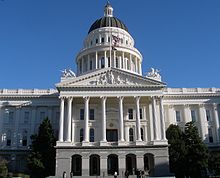 So, here we go, the California legislature is doing their “best” to address the growing number of officer involved shootings. At the same time, they are also making changes to the legal standards used to judge them. According to House Bill 931, entitled Police Accountability and Community Protection Act (PACP).
So, here we go, the California legislature is doing their “best” to address the growing number of officer involved shootings. At the same time, they are also making changes to the legal standards used to judge them. According to House Bill 931, entitled Police Accountability and Community Protection Act (PACP).
The PACP would make it illegal for a law enforcement officer to use “deadly” force unless it was deemed “necessary” under the bill. Sounds great so far, doesn’t it? After all, no police officer truly wants to shoot anyone unless they deem it necessary, do they?
Who Decides What “Necessary” Is?
This is the big question and one that seems to be outlined in the legislation. According to the bill’s authors and others, it goes something like this. If the officer’s use of deadly force is deemed after review, to be unnecessary by both them and their peers, then the officer could be prosecuted. In the event they are not imprisoned, it could still cost them years of hassle that can ruin them emotionally, physically, and financially. They further went on to say this is how we go about protecting the community.
This is not likely to make things any better at all. While hindsight is always 20/20, when you are in the heat of the moment, you have to base your decision on the sensory input and your interpretation of the situation of it unfolds. This could, in fact, lead to the decision to pull the trigger and use deadly force where reviewing the situation via dashcam video, eyewitness reports, and the officer’s own memory may possibly have led to a different decision.
The Supreme Court Weighs In
Fortunately, the Supreme Court Cases of Tennessee vs. Garner and Graham vs. Connor set a precedent regarding the use of any type of police force and how it should be evaluated. The most important passage in the Graham vs. Connor statement is, ” The ‘reasonableness’ of a particular use of force must be judged from the perspective of a reasonable officer on the scene, rather than with the 20/20 vision of hindsight.
Keep in mind that at the time, Chief Justice Rehnquist wrote the decision and that there weren’t any dissenting votes on the panel. This is very much like being handed the commandment from atop Mt. Sinai. Despite this, the powers at large in the California State Assembly have chosen to disagree with the decision put forth by the Supreme Court and have instead chosen to propose their own legislation.
The Other Side of the Problem
Under normal circumstances, any legislation that directly affects law enforcement in the state of California is normally drafted after consultations with a number of local police organizations such as the Police Officers Research Association of California. As of this time, no one has made any attempt to consult with these organizations. Leaving officers in limbo as to what type of reactions they face should they be involved in any type of officer involved shooting.
